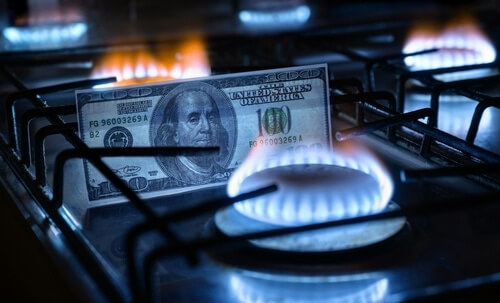US natural gas supplies have declined to their lowest in over a year as the freezing weather left wells on ice amid surging demand for heating.
Expectations of a record-high demand for heating on Tuesday are seen driving power and gas prices to their highest levels in years.
The Arctic blast brought widespread cold to a large part of the US, causing power outages and delays in political campaigns, football games, and travel.
Analysts raised their predictions for record gas demand on Tuesday. They, however, lowered estimates for gas use on Monday, partly because of government offices’ and businesses’ extended closures during the US Martin Luther King Jr. Day holiday.
The Electric Reliability Council of Texas (ERCOT), the state’s power grid operator, has requested residents to save electricity on Monday and Tuesday mornings before solar power plants begin producing energy amid the freezing weather tightening grid conditions, high demand, and a slump in wind power.
ERCOT acknowledged Texans’ conservation for preventing emergency measures, although anticipates electricity demand on Tuesday morning exceeding last summer’s peak, projecting constrained power reserves.
Winter Storm Uri led to extensive power outages in February 2021, leaving millions in Texas and other states without electricity, water, and heat for days.
In response to a substantial loss of generation, ERCOT needed to rotate power outages to keep the grid from collapsing, resulting in fatalities of over 200 people.
Extreme Cold Weighs on US Gas Supply, Demand
US gas output was set to ease by approximately 10.6 billion cubic feet per day (bcfd) in the past week, to fall to a preliminary 11-month low of 97.1 bcfd on Monday as the winter blast freezes wells and other apparatus.
Still, the drop was less than gas supply declines of about 19.6 bcfd during Winter Storm Elliot in December 2022 and 20.4 bcfd registered in the February 2021 freeze.
Kinder Morgan’s El Paso Natural Gas pipeline cautioned that operations would be curbed as spot production at the Permian Basin operates at 93% of planned volumes.
Meanwhile, freezing weather and operational problems in North Dakota’s Bakken shale field led to an estimated 425,000 barrels per day (bpd) shortcoming in oil production and a 1.1 bcfd slide in gas output.
Supplies were also falling, with US gas demand expected to increase 174.3 bcfd on Tuesday from 162.2 bcfd posted the day earlier.
ERCOT anticipates power demand in Texas surpassing supplies by more than 3,700 megawatts (MW), and hit its highest at 86,496 MW on Tuesday, exceeding the record 85,508 MW in August 2023.











